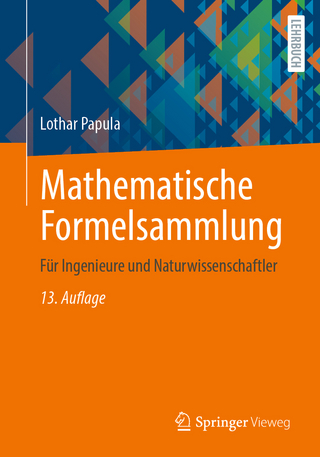
Computational Methods in Solid Mechanics
Springer (Verlag)
978-94-010-4486-8 (ISBN)
A one-dimensional bar model problem, including all the ingredients necessary for acompletepresentationofthe addressed methods, isdefined in Chapter1. Emphasis is placedon the virtual work principle as an alternative to the.differentialequation ofmotion. Chapters 2, 3 and 4 present the three numerical methods: FEM, LIM and FDM, respectively. Although the presentation relies on a one-dimensional model problem, the fonnalism used is general and directly extendible to two- and three-dimensional situations. The compact combination of the three methods is discussed in detail in Chapter 5, which also contains several sections concerning their computer implementation.
1 One-Dimensional Bar Model Problem (Principle of Virtual Work).- 1.1 Kinematics : material description.- 1.2 Dynamics: equilibrium of forces.- 1.3 Mechanics : principle of virtual work.- 1.4 Geometric and material non-linearities.- 1.5 Constitutive laws for solid materials.- 1.6 Discontinuities in space.- 1.7 Thermics : heat equation.- 1.8 Mathematics : functional analysis notions.- 1.9 Summary.- 2 Spatial Discretisation by the Finite Element Method.- 2.1 Global overview : Galerkin method.- 2.2 Nodal FEM : piecewise polynomial basis functions.- 2.3 Localisation of mesh nodal displacements.- 2.4 Interpolation of element nodal displacements.- 2.5 Integration of element nodal forces.- 2.6 Assembly of mesh nodal forces.- 2.7 Properties of force vectors.- 2.8 Automation: isoparametric maps and numerical integration.- 2.9 Boundary conditions condensation.- 2.10 Algorithm: element loop.- 2.11 Practice : heat equation discretisation.- 2.12 Accuracy : error norms and estimates.- 2.13 Summary.- 3 Solution of Non-Linearities by the Linear Iteration Method.- 3.1 Linearisation : classical and directional derivative.- 3.2 Nominal stress linearisation : nominal tangent modulus.- 3.3 Linearized equations of motion : mass and stiffness matrices.- 3.4 Finite element mass and stiffness matrices.- 3.5 Assembly of the mass and stiffness matrices.- 3.6 Properties of the mass and stiffness matrices.- 3.7 Linearized heat equation.- 3.8 Condensation of boundary conditions after linearisation.- 3.9 Linear iteration method : algorithm and variants.- 3.10 Standard and modified Newton methods.- 3.11 Secant or conjugate gradient methods.- 3.12 Gradient and Jacobi methods.- 3.13 Local and global convergence of iterative methods.- 3.14 Local convergence of the LIM : consistency and stability.- 3.15 Glocal convergence of the LIM : damping and continuation.- 3.16 Summary.- 4 Time Integration by the Finite Difference Method.- 4.1 Generalised trapezoidal rule or Euler scheme (applied to the linear heat equation).- 4.2 Modal analysis of the heat equation.- 4.3 General error analysis : summary and glossary.- 4.4 Stability of the heat-trapezoid algorithm.- 4.5 Consistency of the heat-trapezoid algorithm.- 4.6 Convergence of the heat-trapezoid algorithm.- 4.7 Generalized trapezoidal rale or Newmark scheme (applied to the linear wave equation).- 4.8 Modal analysis of the wave equation.- 4.9 Stability of the wave-trapezoid algorithm.- 4.10 Consistency of the wave-trapezoid algorithm.- 4.11 Convergence of the wave-trapezoid algorithm.- 4.12 Summary.- 5 Compact Combination of the Finite Element, Linear Iteration and Finite Difference Methods.- 5.1 Problem statement review.- 5.2 Galerkin-FE algorithm review.- 5.3 Newton-LI algorithm review.- 5.4 Newmark-FD algorithm review.- 5.5 Combining the FE, LI and FD algorithms.- 5.6 Nonlinear thermics algorithm.- 5.7 Nonlinear dynamics algorithm.- 5.8 Nonlinear thermodynamics synthesis.- 5.9 Convergence review.- 5.10 Programming guidelines (TACT example).- 5.11 FD and LI methods programming.- 5.12 FE and algebraic methods programming.- 5.13 Summary.- 6 Two- and Three-Dimensional Deformable Solids.- 6.1 Kinematics : material description.- 6.2 Dynamics: balance of forces.- 6.3 Mechanics : principle of virtual work.- 6.4 Objective constitutive laws.- 6.5 Nominal stress linearisation.- 6.6 Constitutive laws for solid materials.- 6.7 Spatial discretisation in three dimensions.- 6.8 Linearized discrete mechanics.- 6.9 Isoparametric solid finite elements.- 6.10 Finite difference time integration.- 6.11 Final algorithm.- 6.12 Summary.- Conclusion.- Appendix A : List of Symbols.- 1.- 2.- 3.- 4.- 5.- 6.- Appendix B : Exercises.- 1.- 2.- 3.- 4.- 5.- 6.
| Reihe/Serie | Solid Mechanics and Its Applications ; 29 |
|---|---|
| Zusatzinfo | XII, 404 p. |
| Verlagsort | Dordrecht |
| Sprache | englisch |
| Maße | 155 x 235 mm |
| Themenwelt | Mathematik / Informatik ► Mathematik ► Angewandte Mathematik |
| Naturwissenschaften ► Physik / Astronomie ► Mechanik | |
| Technik ► Maschinenbau | |
| ISBN-10 | 94-010-4486-4 / 9401044864 |
| ISBN-13 | 978-94-010-4486-8 / 9789401044868 |
| Zustand | Neuware |
| Informationen gemäß Produktsicherheitsverordnung (GPSR) | |
| Haben Sie eine Frage zum Produkt? |
aus dem Bereich


